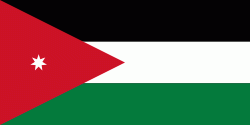Aqaba
 |
Aqaba's strategic location at the northeastern tip of the Red Sea between the continents of Asia and Africa has made its port important throughout thousands of years. The ancient city was called Elath, adopted in Latin as Aela and in Arabic as Ayla. Its strategic location and proximity to copper mines made it a regional hub for copper production and trade in the Chalcolithic period. Aela became a bishopric under Byzantine rule and later became a Latin Catholic titular see after Islamic conquest around AD 650, when it became known as Ayla; the name Aqaba is late medieval. The Great Arab Revolt's Battle of Aqaba, depicted in the film Lawrence of Arabia, resulted in victory for Arab forces over the Ottoman defenders.
Aqaba's location next to Wadi Rum and Petra has placed it in Jordan's golden triangle of tourism, which strengthened the city's location on the world map and made it one of the major tourist attractions in Jordan. The city is administered by the Aqaba Special Economic Zone Authority, which has turned Aqaba into a low-tax, duty-free city, attracting several mega projects like Ayla Oasis, Saraya Aqaba, Marsa Zayed and expansion of the Port of Aqaba. They are expected to turn the city into a major tourism hub in the region. However, industrial and commercial activities remain important, due to the strategic location of the city as the country's only seaport. The city sits right across the border from Eilat, likewise Israel's only port on the Red Sea. After the 1994 Israel Jordan Peace Treaty there were plans and hopes of establishing a trans-border tourism and economic area, but few of those plans have come to fruition.
The name of the city was anciently Elath, Ailath. The name is presumably derived from the Semitic name of a tree in the genus Pistacia. Modern Eilat (established 1947), situated about 5 km north-west of Aqaba, also takes its name from the ancient settlement. In the Hellenistic period, it was renamed Berenice (in Greek Βερενίκη), but the original name survived, and under Roman rule was re-introduced in the forms Aila, Aela or Haila, adopted in Byzantine Greek as Άιλα Aila and in Arabic as Ayla (آيلا). The crusaders called the city Elyn.
The present name al-ʿAqaba (العقبة) is a shortened from ʿaqabat Aylah (عقبة آيلة) "the mountain-pass of Ayla", first mentioned in the 12th century by Idrisi, at a time when the settlement had been mostly reduced to a military stronghold, properly referring to the pass just to the north-east of the settlement (29.559°N, 35.095°W, now traversed by Aqaba Highway).
Map - Aqaba
Map
Country - Jordan
 |
 |
| Flag of Jordan | |
Modern-day Jordan has been inhabited by humans since the Paleolithic period. Three stable kingdoms emerged there at the end of the Bronze Age: Ammon, Moab and Edom. In the third century BC, the Arab Nabataeans established their Kingdom with Petra as the capital. Later rulers of the Transjordan region include the Assyrian, Babylonian, Roman, Byzantine, Rashidun, Umayyad, Abbasid, and the Ottoman empires. After the Great Arab Revolt against the Ottomans in 1916 during World War I, the Greater Syria region was partitioned by Britain and France. The Emirate of Transjordan was established in 1921 by the Hashemite, then Emir, Abdullah I, and the emirate became a British protectorate. In 1946, Jordan gained independence and became officially known in Arabic as the Hashemite Kingdom of Jordan. The country captured the West Bank during the 1948 Arab–Israeli War and annexed it until it was lost to Israel in 1967. Jordan renounced its claim to the territory in 1988, and became the second Arab state to sign a peace treaty with Israel in 1994.
Currency / Language
| ISO | Currency | Symbol | Significant figures |
|---|---|---|---|
| JOD | Jordanian dinar | دا | 3 |
| ISO | Language |
|---|---|
| AR | Arabic language |
| EN | English language |















